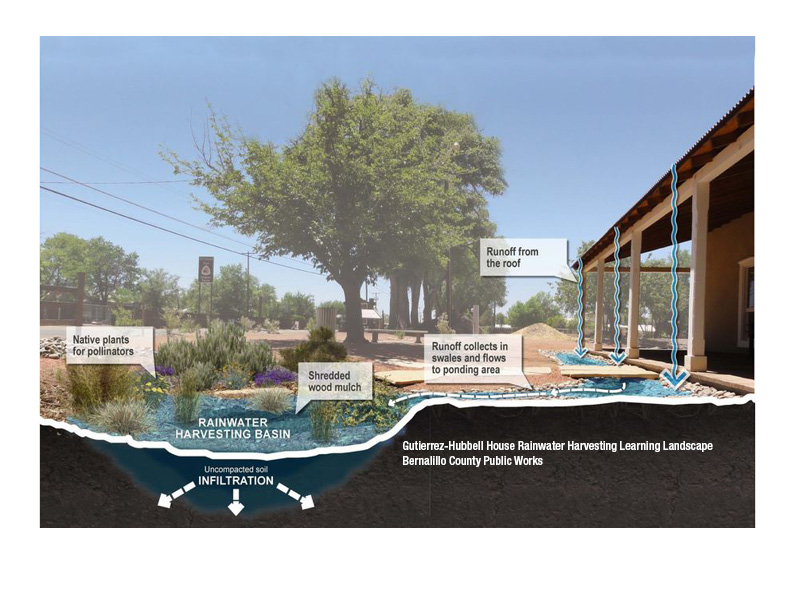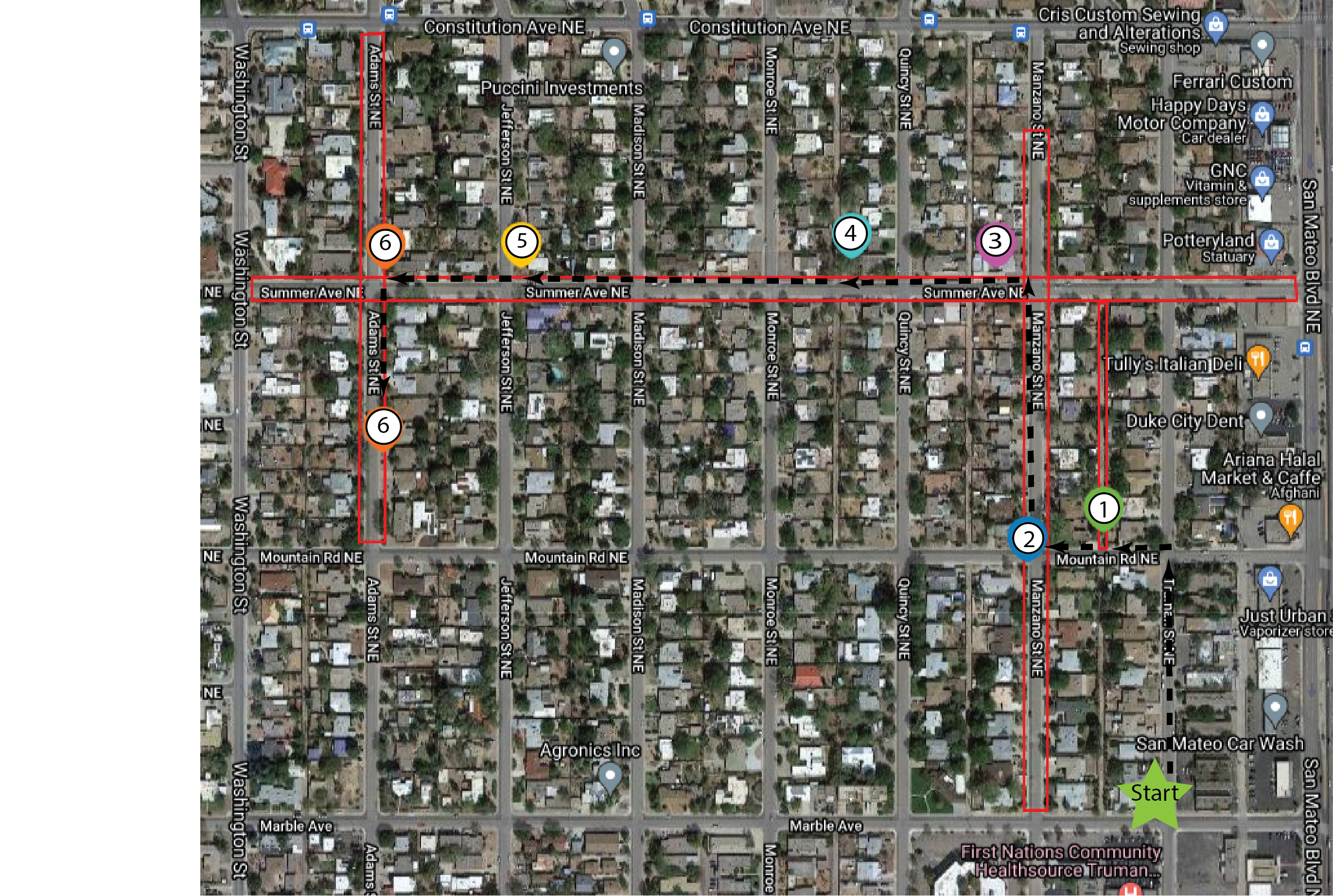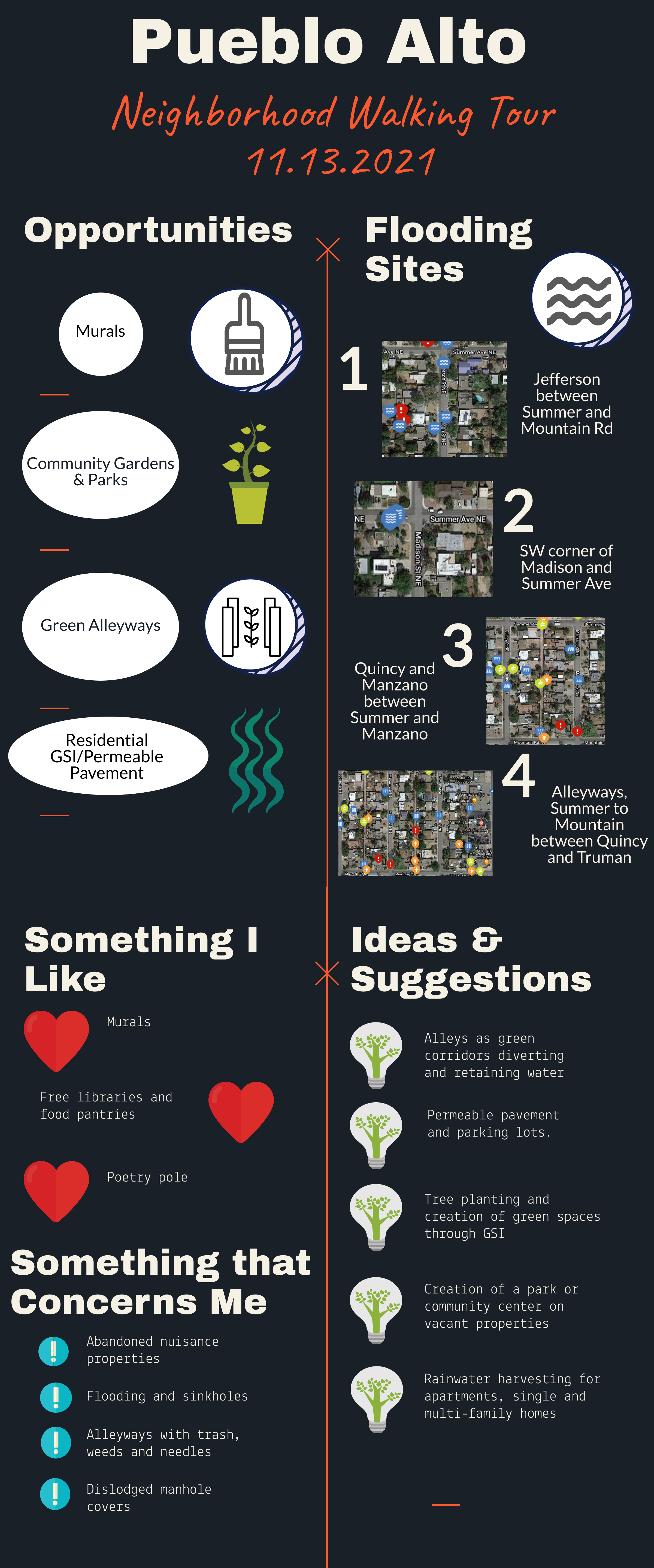Pueblo Alto and Mile Hi Stormwater Interventions

Project Goal: Involve local neighborhood community members in a transparent process identifying assets and opportunities to resolve local drainage issues.
Documents
Weren't able to make the public meeting?
Pueblo Alto and Mile Hi Walking Tours
There's still time to voice your opinion! Please click on the survey button next to your neighborhood map to select your preferred interventions addressing stormwater drainage. The survey will be open until February 19th, 2022. Thanks!

Pueblo Alto Survey on Green Stormwater Infrastructure
Walk the neighborhood and choose your preferred stormwater interventions.

Mile Hi Survey on Green Stormwater Infrastructure
Walk the neighborhood and choose your preferred stormwater interventions.
Survey for Pueblo Alto Walking Tour 2

Survey for Mile Hi Walking Tour 2


Pueblo Alto & Mile Hi Community Meeting
Weren't able to attend the 1/20 meeting? Listen to the meeting by clicking below.
Pueblo Alto Walking Tour Summary

Mile Hi Walking Tour Summary

Documents

Additional GSI Handbooks and Resources
Albuquerque Pueblo Alto & Mile Hi Neighborhoods Project Timeline

Frequently Asked Questions
A list of frequently asked questions regarding the Pueblo Alto and Mile Hi Drainage Project
Why do the Pueblo Alto and Mile Hi Neighborhoods flood?
There are multiple factors that lead to the flooding that occurs within the Pueblo Alto and Mile Hi neighborhoods. In general, the underground storm drain systems in this area of the city are not currently sized to efficiently move stormwater runoff away from these neighborhoods. During large storm events, these pipes can fill to capacity, which causes runoff to back up in the streets and into yards. Other conditions related to topography and drainage patterns within the neighborhoods also cause additional localized areas of flooding. A summary of existing conditions leading to flooding will be provided in the "Existing Conditions Memorandum" and will available to download soon. While the City plans to replace undersized storm drains with a larger system, the replacement is extremely costly (+/-$150 million) and will take many years to implement. This study and outreach effort is intended to identify solutions that could be implemented to help alleviate some flooding issues in the near term.
Why is the City having meetings and tours before addressing the drainage and flooding issues?
The current outreach effort is intended to help the City identify localized drainage interventions that are desirable and acceptable to the surrounding community. Previous studies resulted in clear community concerns regarding larger interventions, such as co-locating or incorporating drainage facilities within existing parks, or acquiring a large number of properties in neighborhoods for detention ponds. This project, working closely with community members, will identify flooding location and concerns, as well as opportunities for smaller, more localized solutions like green stormwater infrastructure. Meetings and tours are critical opportunities for the City and consultant team to hear concerns as well as ideas for opportunities and solutions.
What is Green Stormwater Infrastructure (GSI) and how does it work?
According to the Watershed Management Group’s Green Infrastructure for Southwestern Neighborhoods, Green Stormwater Infrastructure “refers to constructed features that use living, natural systems to provide environmental services, such as capturing, cleaning, and infiltrating stormwater; creating wildlife habitat; shading and cooling streets and buildings; and calming traffic. [It] is a strategy that a growing number of communities are using to manage stormwater more sustainably, while using that water to grow vegetation that provides a myriad of benefits.”
How are maintenance considerations different for GSI than for more conventional stormwater controls?
Both GSI and conventional stormwater systems require periodic maintenance. GSI maintenance is frequently associated with weeds or sediment clogging drains or impeding infiltration. GSI installations usually require more manual labor and less heavy equipment – such as hand weeding or removing sediment and debris from swales and basins. While municipal maintenance crews may not be typically trained in this type of maintenance, it is possible to contract with specialized crews and/or develop a GSI maintenance program.
Where can the City of Albuquerque install and maintain GSI?
The City is limited to funding, installing and maintaining GSI on City property and rights-of-way, such as public parks, streetscapes, and alleyways. The City cannot directly fund, install, or maintain GSI on private property, in compliance with the State’s Anti-Donation Clause (Article IX, Section 14) that prohibits the government from giving gifts of money, property, or credit to private parties. However, it may be possible to create a rebate or grant program to support GSI installations on private and residential properties.
Can the City make the owners of properties that have a large volume of stormwater runoff improve the drainage on their site, such as installing new drainage features?
If a site was designed and built in compliance with ordinances and codes in effect at the time of approval, the City cannot subsequently compel a property owner to make changes or improvements to their existing site. However, in the event of redevelopment, new development, or changes to an approved site plan, that involve more than 500 CY of earthwork, 1000 SF building and/or 10000 SF of paving, the new/current regulations will apply. Changes and amendments to the Drainage Ordinance are not retroactive and only apply to site plans, building permits, and construction that occur after the adoption of the changes.
Can I install GSI on my property and will it help the flooding issues in my neighborhood?
You can install GSI on your property! GSI is a great way to collect the rainwater that falls on your property to supplement irrigation, supporting landscaping and urban wildlife habitat. It is important to be educated about how GSI works and how it must be maintained. Luckily, there are several resources listed on this website to help demonstrate different types of GSI that you can install and maintain in your yard. Installing GSI in your yard will not solve the flooding issues in your neighborhood alone, but it will contribute to the overall effort to reduce the amount of water reaching and filling the overtaxed storm drains.
What do the terms "100-year storm event" and "2-year storm event" mean?
The terms are used by engineers and hydrologists to describe the capacity of drainage infrastructure. These expressions can be misleading as people tend to think that they mean rainfall or flooding that happen every 100 or every 2 years, respectively. Instead, these terms describe the probability that a storm event of a particular rainfall depth will occur. A 100-year storm has a 1% chance of occurring in any given year. A 2-year storm event has with a 50% chance of occurring in any given year.
Is the stormwater runoff from Fair Plaza a biohazard? Is urban stormwater runoff dangerous for plants?
There is nothing to indicate the runoff from Fair Plaza is more of a biohazard or of greater toxicity than runoff from any other parking lot or street in Albuquerque. As in any other urbanized area, pollutants such as oil and other automotive fluids, fats and grease, paints, food waste, bird and animal droppings, construction waste, and vegetation accumulate on impervious surfaces and are carried by runoff during storm events. GSI can help treat urban runoff before the water is returned to the river or aquifer – healthy soils, plant roots, and organic matter filter and break down the common pollutants found in urban stormwater runoff. While GSI can help improve water quality, GSI installations receiving urban stormwater runoff should not include edible plants, as the plants may absorb the toxins from the runoff and become unsafe for consumption.
What should I do if I see evidence of illegal dumping or discharge?
In the event of evidence of an illegal dumping or discharge from one of the properties at the site, the individual should call 311, as this is the best method for properly documenting the circumstance. At that time, the City will send an inspector to visit the specified property and investigate the specific complaint. The City is unable to investigate generic complaints or a “general statement” that may be speculative.
These neighborhoods have been experiencing these flooding issues for many years. How soon can the community expect to see these proposed interventions implemented?
At this point, the team is still receiving input and developing potential interventions. A majority of this outreach process is understanding which potential interventions would be acceptable to the community, which is still in progress. When deciding which intervention is appropriate for a particular location, it will be important to weigh considerations around timing, cost and effectiveness. It is still too early to be able to tie particular interventions with costs, timelines and impact.
Does adding bumpouts and narrowing the width of neighborhood streets create a dangerous condition?
No. In fact, the opposite is true! Narrowing a street slows vehicular traffic, as does lane width reduction. Complete Streets and Vision Zero policies frequently utilize narrowing as a tool to make streets function better for a variety of users, including pedestrians and cyclists. The City of Albuquerque’s Vision Zero Action Plan prioritizes “designing streets for people and safety,” using Complete Streets design techniques and specifically identifies the safety benefits of narrowing streets and lanes. The City’s popular Neighborhood Traffic Management Program (NTMP) has a variety of tools, including bump-outs, chicanes, chokers, and medians, to narrow neighborhood streets in order to slow traffic and improve safety. Hundreds of neighborhoods have submitted requests for this type of traffic calming on their neighborhood streets!
Why doesn’t the City just increase cleaning and maintenance of storm drain inlets? The drains in Mile Hi seemed to function well after the City sent out maintenance crews in June 2021.
After receiving reports of storm drain inlets backing up in the Mile Hi neighborhood during a May 2021 storm, the City sent crews out to inspect the inlets. The crews verified that the inlets were relatively clear and not clogged or blocked by debris. During heavy storm events, the underground stormwater lines are overwhelmed and lack the capacity to receive all of the water entering the system through inlets. Reports of water flowing out of inlets rather into them in the Pueblo Alto neighborhood is additional evidence of this lack of capacity.
Will standing water in bioswales and stormwater bumpouts breed mosquitos?
No. Water collected in bioswales and stormwater bumpouts usually only lasts for a few hours and no more than 48 hours after a storm. Bioswales do not create reservoirs of standing water that might attract or breed mosquitos, which requires a minimum of 72 hours and up to 5 days. Bioswales are designed to be dry aside from the period right after a rainstorm, with an infiltration rate of a half inch per hour or greater. In fact, bioswales are also used as tools to decrease stagnation and standing water that can occur after storms.
To comply with EPA stormwater quality, the City’s Drainage Ordinance has for several years required that new developments, both residential and commercial, have drainage plans to capture a certain volume of stormwater runoff from the property; the City’s Development Process Manual (http://documents.cabq.gov/planning/development-process-manual/DPM-2020-06-02_signed.pdf) allows for multiple methods of retaining this water, most of which are green infrastructure like swales, bioswales, trenches and depressed landscape/bioretention areas. The EPA notes that when properly designed and maintained, stormwater management practices such as bioswales and bioretention areas are not conducive to mosquito breeding (Stormwater Structures and Mosquitos).
Learn How to Landscape for Wildlife
Find local plant lists, attend Albuquerque workshops and design your own rain garden with helpful tips from this website.
Read about various green stormwater projects in the Albuquerque area
See maps of demonstration projects and future plans for low-impact development.
Save money through waterwise landscaping with ABQ Water Utility Authority
Check out rebates for xeriscaping and rain water harvesting.
What is Green Stormwater Infrastructure and Low Impact Development?
What is green stormwater management?
Check out this video on protecting our water quality and conserving our water while managing neighborhood flooding.
Rainwater Harvesting and Management
Check out this training video explaining the benefits of rainwater harvesting created by the ARID Low Impact Development Coalition.
For more of these training videos on design, installation, care and maintenance of a rainwater garden go to https://www.bernco.gov/public-...


